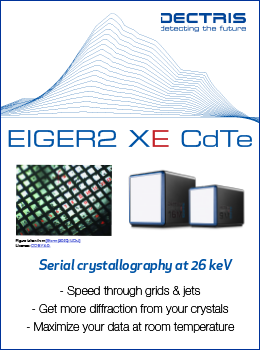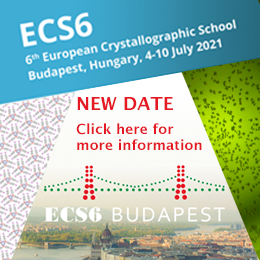


Meeting report (IUCr supported)
ECM32 Satellite Meeting: Mathematical and Theoretical Crystallographic Workshop
![Thumbnail [Thumbnail]](https://www.iucr.org/__data/assets/image/0005/148730/MaThCryst2.png)
Ahead of the ECM32 meeting, hosted by the University of Vienna, Austria, numerous satellite workshops were held at the TU (Technical University) Wien. Most took place in the electrical engineering building with shared coffee and lunch breaks. Within this scope, the IUCr Commission on Mathematical and Theoretical Crystallography (MaThCryst) organized a 2.5 day satellite workshop, from 17 to 19 August 2020, with a special focus on graph theory and modular structures.
Fifteen participants from diverse backgrounds (chemistry, mathematics and crystallography) attended the workshop. The participants hailed from six countries: Austria, Germany, Israel, Japan, Russia and the UK.
On the first day, fundamentals of graph theory and their applications to crystal structure analysis were presented by Bernd Souvignier (Radboud University Nijmegen, Netherlands). Special focus was placed on the analysis of periodic nets. These are crucial to describe the connectivity of atoms or groups in crystalline materials. In the morning session of the second day, Massimo Nespolo (Université de Lorraine, Nancy, France) introduced the application of space groupoids to describe modular structures in a general way. In modular structures, which are ubiquitous in all classes of materials, operations are applied to subspaces of crystal space. These substructures can be non-periodic blocks or sub-periodic units (rods or layers). As the operations relating two modules need not apply to the whole crystal, their composition forms a groupoid instead of a group. In the afternoon Berthold Stöger (Technical University Vienna, Austria) focused on the concrete case of order–disorder (OD) structures. These are modular structures composed of layers that are arranged in such a way that there is only one geometrical way of placing adjacent layers. Thus, an infinity of different stacking arrangements, which are nevertheless locally equivalent, can exist, leading to challenging problems such as twinning or disorder. The sessions on graph theory and modular structures comprised approximately two thirds lecture and one third exercises, including discussion.
![[MaThCryst session]](https://www.iucr.org/__data/assets/image/0011/148736/MaThCryst3.png)
In the morning session of the last day, the session on OD structures was completed and two oral talks of ca 30 minutes were given by two attendees. Shelomo I. Ben-Abraham (Beer-Sheba, Israel) presented Multidimensional crossed cube tilings. Vitaliy Kurlin (Liverpool, UK) in his talk How to correctly sample unit cells in computer simulations of crystal structures proposed using Wigner–Seitz cells instead of reduced cells to provide a unique and continuous mapping of lattice metrics. The talks resulted in a lively discussion. The workshop closed during lunch of 19 August with a poster presentation by three attendees.
On the evening of the second day the participants of all workshops met at a typical Viennese “Heuriger” to enjoy local food and wine. This social evening provided a unique networking opportunity.
Four young participants (two male and two female) from three countries (UK, Germany and Russia) applied for travel assistance, which was generously provided by the IUCr.
The feedback was generally positive. Unifying participants from such diverse backgrounds was challenging, but ultimately satisfying. The organizers and participants published six papers in the May 2020 special issue of Crystal Research and Technology on Mathematical Crystallography 2019. Owing to the positive experience, the organizers plan to repeat workshops on mathematical and theoretical crystallography at upcoming ECMs.
Copyright © - All Rights Reserved - International Union of Crystallography








